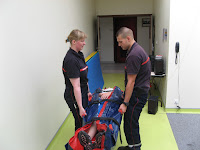May we never forget those who carry on ...
Amazing grace, how sweet the sound,
That saved a wretch like me,
I once was lost, but now i'm found,
Was blind, but now i see.
'Twas grace that taught my heart to fear,
And grace my fears relieved;
How precious did that grace appear
The hour i first believed.
'Tis grace hath brought me safe thus far
And grace will lead me home.
When we've been here ten thousand years
Bright shining as the sun
We've no les praise to sing God's praise
Than when we first began.
May we never forget ALL the reasons of this tragedy ...
May we never forget ALL those who died during these last 10 years , in the USA and worldwide ...
Don't forget ALL those who still suffer in their body,
ALL those who still suffer in their heart,
ALL those who still suffer in their soul,
in the USA and worldwide ...
Let us decide to work together on a better world, on a peace world...
... to live no never one such tragedy.
Psalm 46
1 God is our refuge and strength, a very present help in trouble. 2 Therefore we will not fear, though the earth should change, though the mountains shake in the heart of the sea ; 3 though its waters roar and foam, though the mountains tremble with its tumult. (Selah) 4 There is a river whose streams make glad the city of God, the holy habitation of the Most High. 5 God is in the midst of the city ; it shall not be moved ; God will help it when the morning dawns. 6 The nations are in an uproar, the kingdoms totter ; he utters his voice, the earth melts. 7 The Lord of hosts is with us ; the God of Jacob is our refuge. (Selah) 8 Come, behold the works of the Lord ; see what desolations he has brought on the earth. 9 He makes wars cease to the end of the earth ; he breaks the bow, and shatters the spear ; he burns the shields with fire. 10 "Be still, and know that I am God ! I am exalted among the nations, I am exalted in the earth." 11 The Lord of hosts is with us ; the God of Jacob is our refuge. (Selah)
We HAVE TO work for the Future, now...
God blesses the WORLD.





























































